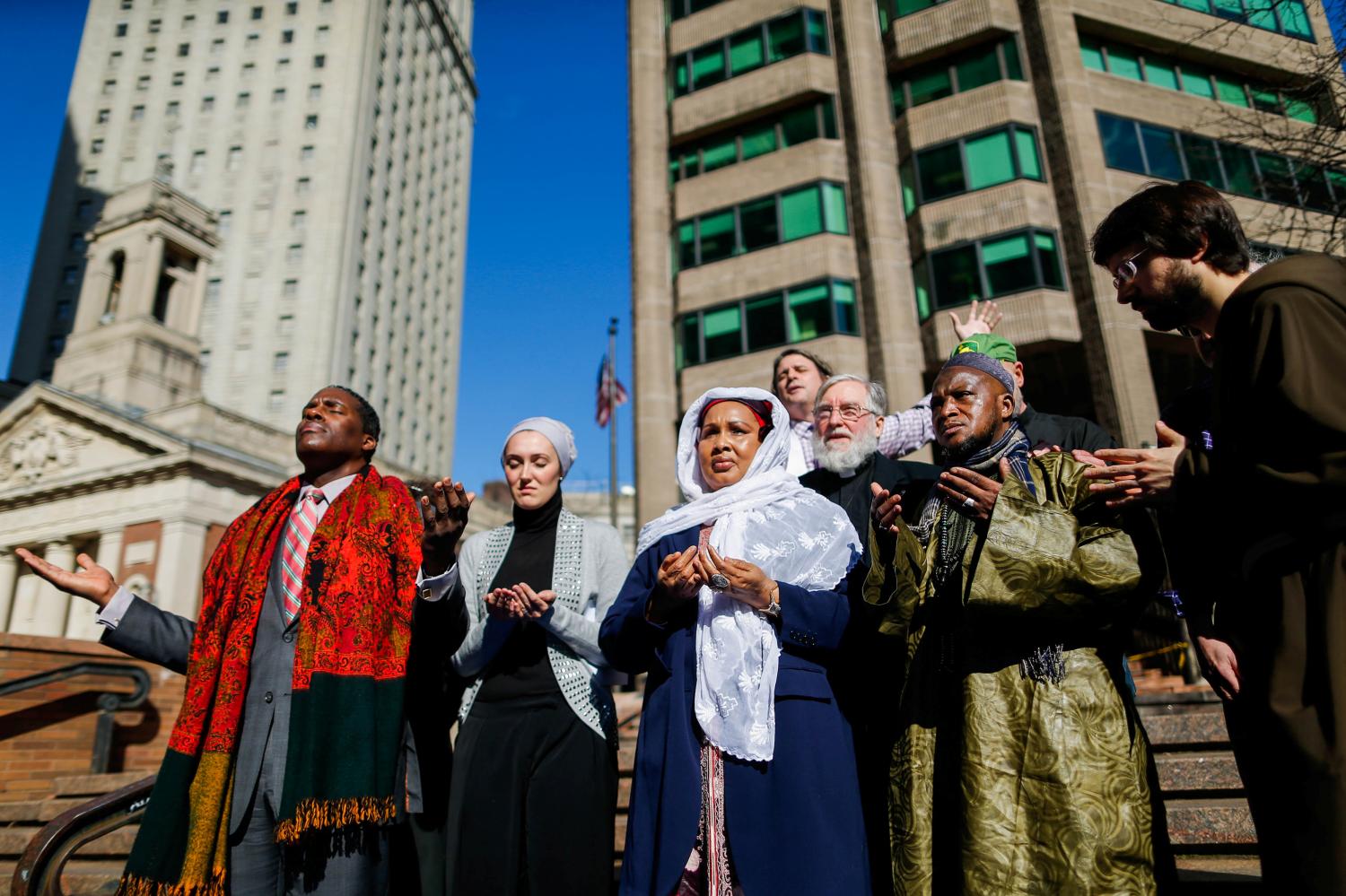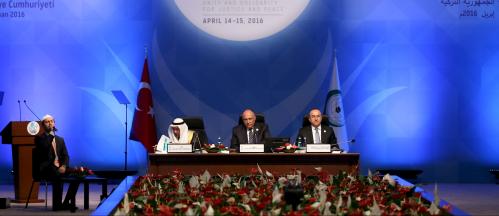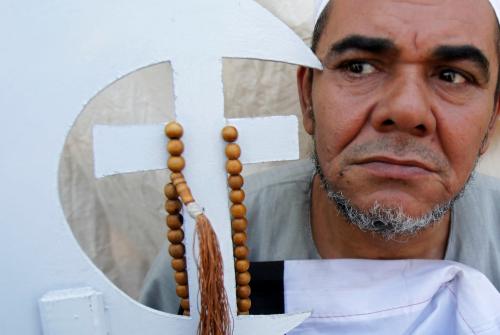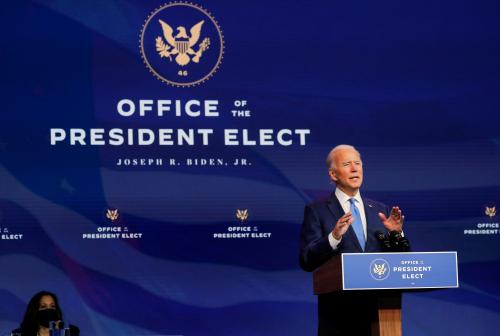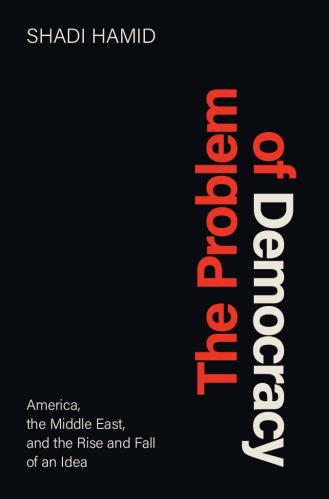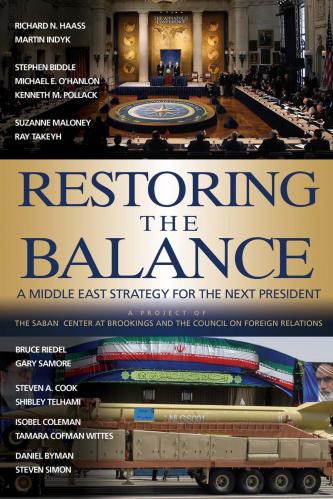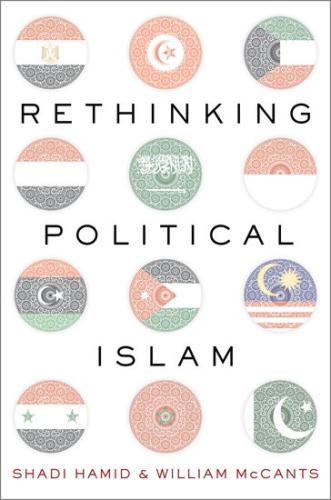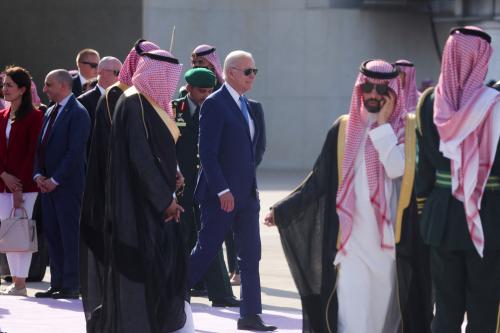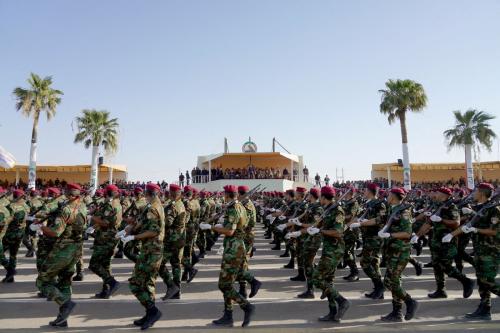Since the administration of George W. Bush, the U.S. government has placed consistently greater emphasis on building capacity within federal agencies to engage with religious actors and faith-based communities to achieve policy goals, domestically and abroad. Beginning with the establishment of the White House Office of Faith-Based and Neighborhood Partnerships in 2001, this trend extended across the federal system. Today, offices or centers focused on engaging religious communities can be found within multiple departments and agencies including Commerce, Education, Labor, and the United States Agency for International Development (USAID).
In 2013, the State Department established the Office of Religion and Global Affairs (RGA), headed by a special representative and—reflecting the office’s building-wide remit—bureaucratically lodged within the Office of the Secretary on the seventh floor of Foggy Bottom. RGA soon acquired three additional principal officers whose mandates pre-dated the new office: the special envoy for monitoring and combatting anti-Semitism, the special envoy to the Organization of Islamic Cooperation (OIC), and the special representative to Muslim communities. The logic behind this move appeared to be that since these pre-existing roles all had a connection to organizations or communities perceived as “religious” in some sense, combining them in a single unit would create beneficial synergies across their work.
Before RGA, the only office in the State Department explicitly connected with religion was the Office of International Religious Freedom (IRF), which was established through the International Religious Freedom Act of 1998. Located within the Bureau of Democracy, Human Rights, and Labor, IRF advocates and provides funding for programs designed to advance religious freedom around the world. The office’s work is sometimes perceived as being narrowly focused on supporting persecuted Christians, but such accusations of bias are unfair and likely arise from the fact that the most vocal advocates of international religious freedom on Capitol Hill tend to focus almost exclusively on the plight of Christians.
The Office of Religion and Global Affairs, on the other hand, was established to fulfill a very different function. Its basic point of departure is the recognition that in many societies around the world religion is an increasingly important force in public life shaping political discourse, social attitudes, institutions, and policy outcomes—both for good and for ill. American diplomats therefore need to understand these dynamics better and also develop greater capacity to engage with religious actors to advance U.S. policy interests. Its mission is first and foremost about augmenting the diplomatic toolkit.

Adding new functions—such as religion—to a vast and risk-averse bureaucracy such as the State Department is always a tall order, and, as Sara Silvestri and I have argued elsewhere, RGA faced numerous obstacles right out of the gates. For many diplomats, religion is a tricky and sensitive topic best avoided altogether. Others worried that the U.S. Constitution’s Establishment Clause, which bars the federal government from taking positions on matters of religion, was a legal barrier to engaging with religious actors (it isn’t). And for many, it was just impossible to imagine religion’s relevance to diplomacy beyond the work of IRF (already regarded by denizens of realpolitik in the department as peripheral, due to its association with human rights) or the intersection of Islam and security.
By and large, RGA has succeeded in surmounting these obstacles. It has formed close working relationships with a number of the State Department’s regional bureaus and demonstrated a tangible capacity to support the priorities of U.S embassies and posts abroad—the professionals who actually manage the day-to-day frontlines of American diplomacy. For the first time, religious leaders, organizations, and institutions have had a clear pathway of entry into the State Department, and the literally thousands of new relationships that RGA has enabled with a sector that used to be severely under-represented in the diplomatic rolodex represent an invaluable resource going forward. Perhaps most crucially, the office has shown that there is far more to the religion and diplomacy agenda than just Islam and security. RGA has developed policy approaches and initiatives that have made concrete and recognized contributions across a wide range of issues including combatting corruption, protecting the natural environment, advancing global trade, and enhancing public health.
Most of RGA’s critics outside government seem to assume that the office was directly implicated in the Obama administration’s emphasis on countering violent extremism (CVE) and therefore heavily involved in helping the State Department to identify “moderate” Muslims whose voices could be amplified to discredit groups such as ISIS and al-Qaida. In fact, the central thrust of RGA’s effort in the CVE space has pointed in exactly the opposite direction, arguing strongly that the United States should stay clear of endorsing—and thereby discrediting—religious leaders who take a stand against ISIS. Recognizing that the U.S. government has no standing to pronounce on matters of religion—and quite aside from the question of whether it would even be legal for it do so—RGA has maintained that State Department leaders should not be in the business of nodding towards any particular interpretation of Islam. Rather than trying to provide theological antidotes to Salafi-jihadi ideology, RGA has pushed the idea that religious leaders can contribute to CVE efforts through the broader societal roles they play with respect to issues such as governance, peacebuilding, and economic development.
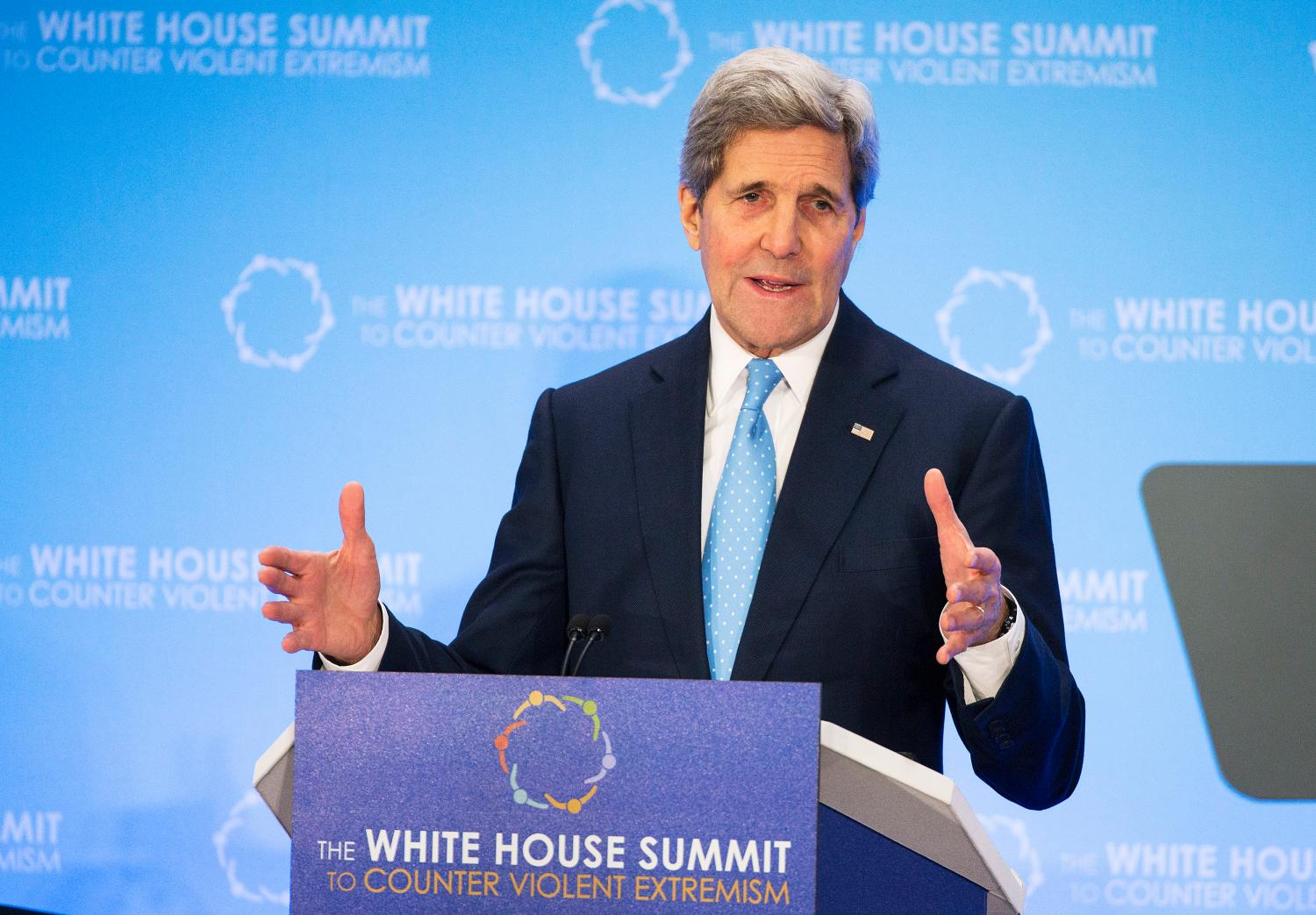
So what should happen to RGA under Secretary of State Rex Tillerson and the Trump administration—particularly in a climate of downsizing where any function outside core operations might be on the chopping block?
Eliminating the department’s capacity to engage religious actors in pursuit of U.S. national security and foreign policy objectives would do American diplomacy a great disservice. The office’s budget is mere pocket change in the grander scheme of national security funding and its many contributions—as outlined above—far outweigh its costs. There is also an important question of political optics to consider. Faith-based communities represent an important constituency within Trump’s domestic base, so would the administration want to risk sending a signal that it does not consider religion and religious communities important by closing down RGA?
The administration should therefore consider a range of possible organizational changes to the religious engagement function at State that would preserve its clear utility while rendering its work even more efficient and effective. Here are some guidelines and ideas for the new administration to consider when thinking about the future of the Office of Religion and Global Affairs:
1Engaging religious actors to advance U.S. foreign policy goals and promoting religious freedom abroad are separate functions. In the interests of bureaucratic efficiency, it may be tempting to combine the RGA and IRF offices into a single religion unit. This would be a severe mistake since the two offices undertake very different kinds of work requiring disparate skill sets and operating principles. IRF represents a human rights advocacy function while RGA’s broader toolkit applies to a wide range of policy areas and issues. To be successful and effective, the religious engagement function must be able to avoid even the perception of being associated with an inherently normative project, such as promoting international religious freedom. And yet it is also important to recognize that there is inevitably great complementarity between RGA and IRF in the sense that some modicum of religious freedom is a prerequisite for engaging religious actors effectively. As former State Department hand and leading commentator on religion and foreign policy Judd Birdsall puts it: “the two functions should be coordinated but not combined.”
2OIC and anti-Semitism should be moved elsewhere, while the Muslim engagement position should be eliminated. There are two good reasons why this is the case. First, the OIC and anti-Semitism envoys represent highly important and valuable functions, but RGA is the wrong place to house them. The Organization of Islamic Cooperation is a multilateral body and it therefore belongs in either the Bureau of International Organization Affairs or wherever the Trump administration decides to house the multilateral affairs function. As an intergovernmental organization, the OIC merits more attention than we usually give it. Working with and through the OIC, the United States can often pursue initiatives and touch constituencies unreachable through other channels. The special envoy for monitoring and combatting anti-Semitism is more relevant today than ever. Not only are we seeing anti-Semitism on the rise in Europe and elsewhere, this envoy also has the capacity to function as a roving ambassador for addressing hate speech, discrimination, and intolerance around the world. However, the work of this envoy is much more about advancing human rights than it is about engaging religion and should therefore be lodged in the Bureau of Democracy, Human Rights, and Labor.
As a position established to fulfill a broad and nebulous public relations function early in the Obama administration, the mandate of the special representative to Muslim communities has never been entirely clear. Insofar as it gives the impression that the State Department places special emphasis on the religious identity of Muslims around the world, the position actually serves to exacerbate a perception that the U.S. views Muslim communities as somehow exceptional when compared to adherents of other faith traditions (none of whom have dedicated diplomatic envoys). Ironically, emphasizing the Muslim factor also at some level serves to reinforce the narrative of groups such as ISIS and al-Qaida that stresses the predominance of religious identity over nation-state identities. Would it not be more consistent with U.S. national security interests to deal with Muslims as citizens of e.g. Senegal, Jordan, Kazakhstan, Bangladesh, and Malaysia rather than as members of a transnational umma (community)?
On balance, the special representative to Muslim communities position should be eliminated.
With these three other quite separate and distinct positions—and the bureaucratic overhead associated with them—moved out of RGA, it will be easier for the religious engagement function to fully emerge and define itself.
3Increase the organic connection between religious engagement and key relevant policy domains by moving RGA out of the Secretary’s Office. While the privileged status implied by RGA’s location on the rarefied seventh floor of the Harry S. Truman building might at first glance seem to be a major asset, it simultaneously represents a huge obstacle to the longer-term institutionalization of the religious engagement function within the department. Much of State’s permanent bureaucracy regards “Specials”—referring to the dozens of special envoys and special representatives positions that currently abound (and which the Trump administration is already talking about trimming)—as non-essential, “boutique” functions or as the pet projects of whoever happens to be secretary at any given time. These offices often find themselves having to work very hard to attract attention, resources, and buy-in from the core bureaucracy.
While its early claim of being relevant to all U.S. foreign policy issues was important for making an initial splash in the building (and signaling that its work was about more than IRF or Islam and security), it would be wise now for RGA to focus on those policy functions where its added value is clearest and strongest. Having emerged successfully from its “incubation phase” in the Secretary’s Office, the new administration should consider relocating the office elsewhere in the bureaucracy going forward. Doing so would allow it to establish more direct, regular, and organic connections with relevant policy functions and to become better integrated in the day-to-day rhythm of the policy process.
Several of the issues where RGA has been most successful in forging constructive partnerships—namely governance and anti-corruption, conflict stabilization, and refugees—reside within the Undersecretariat of Civilian Security and Global Affairs (known internally as the “J” cone). Housing RGA as a unit within this undersecretary’s front office would give it a home within the guts of the bureaucracy as well as greater proximity to a family of bureaus with which it already has close and productive collaborations. While the fate of the “J” bureaus may be up in the air, if a 2016 report by the Heritage Foundation is anything to go by, the basic principle remains the same: RGA should be lodged in close proximity to the functional bureaus with which it does the lion’s share of its business—wherever those bureaus might ultimately end up.
Wherever the office responsible for engaging religious actors ends up, it should be headed by a senior career diplomat—preferably someone with a reputation as a no-nonsense, pragmatic problem solver who gets things done. Focusing on career leadership would solve two problems. First, given that religion is an increasingly tricky issue on the domestic political front, it would avoid the perception—certain to surround any political appointee in the position—that RGA is only willing to engage with religious actors aligned with the tastes and preferences of the prevailing administration. Having a career diplomat running the show would help to emphasize the idea that RGA’s approach is first and foremost utilitarian insofar as its criteria for engagement are driven by the question of which interlocutor or partner is most appropriate for addressing the issue at hand. Second, having as its champion someone already well trusted by the bureaucracy would enable RGA to overcome some of the skepticism within the State Department about whether the religious engagement function actually adds value to the diplomatic mission.
Some, such as Doug Johnston—a pioneering figure in thinking about the role of religion in statecraft—have advocated for the idea of establishing dedicated religious affairs officers within U.S. embassies or regional bureaus as a means to ensure that matters of religion become integrated into the day-to-day work of these teams. While such an approach is certainly worth considering, there is a strong risk that atomized religion officers operating alone would find themselves easily ignored by the bureaucratic micro-cultures that define particular embassies and regional bureaus—particularly when their work is tied to a topic whose direct relevance to the core concerns of politics, economy, and security is not always evident.
4Training diplomats to engage religious actors effectively must remain a key priority. One of the most important functions provided by RGA since its inception has been its work to support the development of a training curriculum on religion and foreign policy at the Foreign Service Institute (FSI), the State Department’s main facility for training American diplomats. FSI has offered an elective course on “Religion and Foreign Policy” since 2011, before RGA was even established. But with the advent of the new office at Foggy Bottom, the rationale and importance of the course grew significantly. The first cadres of students to go through the week-long program tended to be people already convinced of the need for integrating religious engagement into diplomacy but over time the class has come to attract students with less in the way of previous experience with religion and who are enrolling in the class because they have come to appreciate the value that religious engagement offers to their particular assignment or portfolio.
Going forward, it will be important to continue developing and institutionalizing this curriculum. In addition to the standalone elective course, modules on religion and diplomacy should be developed for other relevant courses at FSI (e.g. governance and human rights, counterterrorism and countering violent extremism, conflict stabilization operations). The various mid-career and senior professional development courses would also benefit from a focus on religious engagement, and training at that level could help to enable managers within the department to begin making space for and incentivizing their staff to undertake such work. Finally, integrating some attention to religious dynamics in the A100 course—FSI’s “boot camp” for new foreign service officers—would help to develop core awareness and capacity in religion across the Department’s diplomatic corps. Indeed, a sufficiently robust focus on mainstreaming religious engagement tools and tradecraft at FSI could over time obviate the need for a dedicated religion office at Foggy Bottom.

5Resist the temptation to define religion and foreign policy as counterterrorism. The Trump administration has indicated that defeating “radical Islamic terror groups” is its top foreign policy priority. Some of the president’s closest advisors, Sebastian Gorka most notably, have recommended approaches to this issue that depart significantly from the broad consensus of national security experts on both sides of the political aisle. More specifically, this approach figures the global jihadi movement as an existential threat to the United States on a par with Nazi Germany or the Soviet Union. It sees religious ideology as the root of the problem and recommends a comprehensive effort to discredit this ideology as the cornerstone of U.S. security strategy. There is therefore some real risk that, if the administration decides to embrace such an approach, that an office like RGA could be re-purposed as a platform for coordinating the State Department’s contribution to counter-ideological operations. A less dramatic retooling of U.S. counterterrorism strategy—perhaps as the result of a compromise between the president’s inner circle and the national security bureaucracy—might involve an increased emphasis on identifying, funding, and amplifying “moderate” Islamic alternatives to ISIS and al-Qaida. This would be, in effect, a return to first generation Global War on Terror (GWOT) tactics, perhaps best embodied in the now infamous RAND Corporation report “Building Moderate Muslim Networks.” Such an approach entails all of the mistakes described above with respect to the United States getting involved in religious debates and placing undue emphasis on the religious identity of Muslim communities. Recent research by Annelle Sheline suggests that regional governments pushing moderate religion are wholly ineffective at best, and in some cases doing harm to human rights and religious freedom. It would be better to see RGA closed down than for it to embark down this path.
Passing the torch
Religion seems only likely to grow in salience as a significant force in world affairs. The policy calculus that led the State Department to establish the Office of Religion and Global Affairs in the first place has therefore not changed—if anything, the case is even more compelling at present. Katherine Marshall and Susan Hayward, leading experts on religion and international affairs, have argued that the Trump administration should preserve the State Department’s religious engagement toolkit. And the United States is not alone in taking an interest in these issues. The foreign ministries of our closest allies in Europe have also begun exploring ways to build awareness and capacity to engage religion within their diplomatic services. The recent establishment of a flourishing Transatlantic Policy Network on Religion and Diplomacy (coordinated out of Cambridge University in the U.K.), which brings together European and North American diplomats whose portfolios focus on religion, speaks to the importance of religion as a space of collective diplomatic effort.
While significant changes to the organization of the State Department’s Office of Religion and Global Affairs may be in order, it represents an important policy function only now just starting to come into its own—and one that has the potential to pay considerable dividends to U.S. foreign policy and national security in the future.

